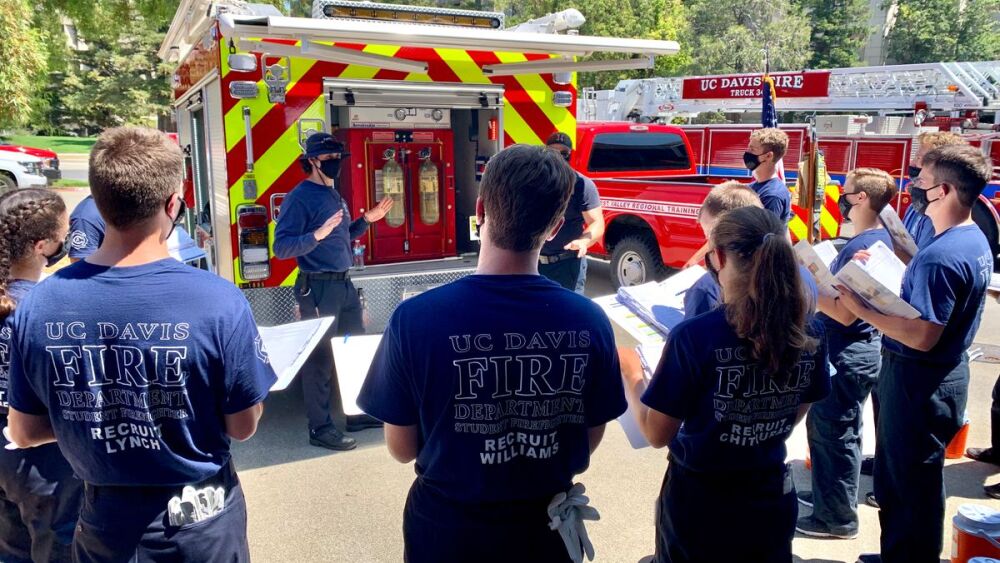The 2022 Firefighter Safety Stand Down, taking place June 19-25, focuses on the importance of situational awareness to help firefighters solve problems, prevent bad outcomes, and make better decisions in high-stress environments. This series covers how to apply situational awareness to five incident types to be covered in daily focus activities: structure fires, EMS, wildland incidents, roadway response and acts of violence.
Developing and maintaining situational awareness is a three-step process that includes:
- Perception: Gathering information about what is happening around you
- Understanding: Making sense of the information you gather
- Prediction: Anticipating future events to prevent bad outcomes
Responders use perception to gather critical clues and cues about the emergency. Some of the information is shared with responders over the radio, some of the information may come from preplans, and some of the information is gathered during the size-up. Think of the information gathered as pieces to a puzzle that responders must assemble. The assembled puzzle pieces form a “picture of understanding” that allows responders to make sense of what is happening.
The responder’s understanding drives the decision-making process. If responders shortcut this process, they may find themselves making decisions before they understand the problem that needs solving. As you can imagine, this can lead to errors in decision-making, flawed tactics and tragic outcomes.
Wildland incidents
From my first-hand experience working with wildland firefighting agencies, I know they dedicate considerable time training on the importance of situational awareness. As I visit their facilities, I often see posters with situational awareness-related information. So, with such a focus on situational awareness, then how is it that wildland firefighters still experience significant near-miss and casualty events?
First, let me make one thing clear: A responder can have exceptional situational awareness and still have a bad outcome. While situational awareness is the foundation for good decision-making, it is not flawless. Unexpected and novel events happen, even to the most experienced responders.
Wildland firefighting is often physically demanding work performed over extended periods of time. This can lead to mental fatigue, which can impact situational awareness. When a firefighter becomes physically fatigued, there are outward indicators (clues and cues) to let them know they are experiencing physical fatigue. However, mental fatigue is different, as it can creep in slowly with few outward indicators in the early stages.
Mental fatigue can slow the entire situational awareness process. Responders may not pay as close attention to their surroundings. This could mean a reduction in looking left, right, up and down, both with the head and with the eyes, which can impact perception. Fatigue can also impact understanding as it become more difficult to process the meaning of sensory inputs. Mental fatigue can also impact prediction as responders can shortcut decision-making processes, impacting their ability to accurately anticipate outcomes.
When mentally fatigued, a responder may get to a point where they simply cannot make a decision at all. Or they may be willing to make a decision with very limited information because the effort to gather additional information is too great (i.e., good enough is good enough). Because they are mentally fatigued, they may also be willing to make decisions without giving due consideration to the potential consequence. They are also vulnerable to implementing the first decision option that comes to mind without considering alternatives because of the mental energy it takes to compare/contrast options.
The is where the cliché “two heads are better than one” may benefit responders. Sharing the mental workload, creating a shared situational awareness and openly communicating concerns among the crew about changing conditions can help the team improve the potential to see bad things coming in time to prevent bad outcomes.
It can also be helpful to keep track of how fast time is passing during an incident. Under stress, while performing physically demanding work, time can get away from us (e.g., an hour can pass though it many only seem like 15 minutes). Tracking time helps responders understand how long they have been working under demanding conditions and can be an indicator of impending mental fatigue.
learn more about situational awareness
- Day 1: Situational awareness at structure fires: 4 questions to guide decision-making
- Day 2: Situational awareness at EMS incidents: Overcoming complacency
- Day 3: Situational awareness at roadway incidents: Honing a defensive mindset
-
Day 5: Situational awareness during acts of violence: Vigilance is key
Safety Stand Down resources for each incident type, as well as general situational awareness information, are available at the Safety Stand Down resources center.
Read next
Situational awareness: The foundation for good decision-making
The 2022 Firefighter Safety Stand Down focuses on practical applications of situational awareness, on and off the incident scene














